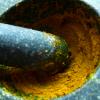-
Welcome to the eG Forums, a service of the eGullet Society for Culinary Arts & Letters. The Society is a 501(c)3 not-for-profit organization dedicated to the advancement of the culinary arts. These advertising-free forums are provided free of charge through donations from Society members. Anyone may read the forums, but to post you must create a free account.
Dinner! 2013 (Part 3)
-
Similar Content
-
- 2,266 replies
- 354,092 views
-
- 1,294 replies
- 217,679 views
-
- 2,108 replies
- 346,658 views
-
- 95 replies
- 19,391 views
-
- 1,902 replies
- 354,481 views
-
-
Recently Browsing 0 members
- No registered users viewing this page.






Recommended Posts